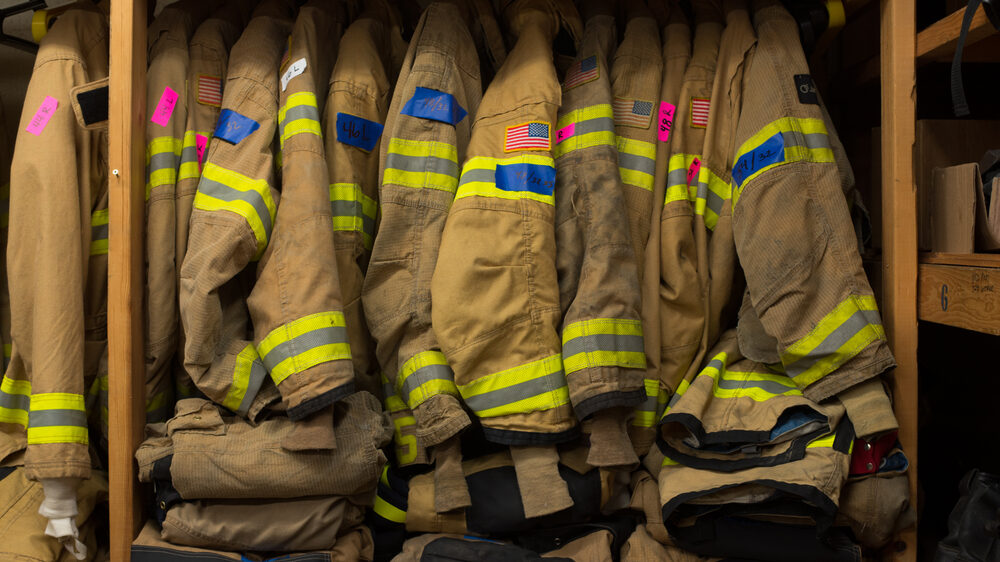Fire-resistant fabrics market forecasted to exceed USD 12.5 billion by 2035
- November 1, 2023
- 8:00 am


Iain Hoey
Share this content
Growth driven by the increasing prevalence of fire incidents and the demand for enhanced safety measures, says Research Nester.
The rising trend in the fire-resistant fabrics market
The global fire-resistant fabrics market is set to experience significant growth, with a compound annual growth rate (CAGR) of over 9.1% from 2023 to 2035.
The market is anticipated to achieve a revenue of USD 12.5 billion by 2035, a substantial rise from the USD 4.4 billion recorded in 2022.
This upwards trend is linked to the increasing number of fire incidents globally.
For instance, according to the report by Research Nester: “About 3,700 civilians died and approximately 14,600 were injured in 2021 as a result of the over 1,353,400 fires that occurred in United States.”
Consequently, there is a growing demand for fire-resistant fabrics, particularly among firefighters.
How are these fabrics made flame-resistant?
To make fabrics flame resistant, a fire-retardant chemical is sprayed on them.
Though these fabrics’ fibres aren’t inherently protective, the chemical treatment enhances their resistance to flames.
These textiles are primarily produced from 100% cotton fibres or a blend of cotton and nylon.
This market is also benefiting from the increasing production of cotton fibres, with figures indicating that: “each year, about 26 million tonnes of cotton are produced worldwide.”
Urbanisation and its effects on the market
The rise in urban population has inadvertently led to an increase in fire incidents. Urban areas are more susceptible to fires, often stemming from electrical mishaps or cooking-related accidents.
With an estimated 55% of the global population residing in urban areas as of 2021, the demand for fire-resistant fabrics is on the ascent.
A regional breakdown
The fire-resistant fabrics market spans across major regions, including North America, Europe, Asia Pacific, Latin America, and the Middle East and Africa.
- In Asia Pacific, the market is set to dominate with a 32% share, primarily due to the growth of the oil & gas industry, which produces about: “6 million barrels of oil daily in the Asia-Pacific area in 2022.”
- North America is also anticipated to hold a significant market share, attributed to the frequent forest fires in the region. Notably: “according to data from the National Interagency Fire Centre, as of October 4, 2023, there had been about 49,100 fires which destroyed 2.57 million acres.”
Segments and end-users
The primary sectors that utilise fire-resistant fabrics are Transportation, Industrial, and Defense & Public Safety.
Among these, the industrial sector is projected to have the largest share, largely due to the rise in industrial activities like mining.
As the mining sector continues to expand, so does the risk of explosions and accidents, thus heightening the need for fire-resistant fabrics.
Key players in the market
The global fire-resistant fabrics market is home to several notable companies. Research Nester has profiled some of the leading brands, including Solvay S.A., Gunei Chemical Industry Co., Ltd., WL. Gore & Associates, Inc., PERFORMANCE PRODUCTS INC., Huntsman International LLC, Lenzing AG, Teijin Limited, Milliken & Co group, and Royal TenCate Protective nv.
IFSJ Comment
The escalating growth of the fire-resistant fabrics market underscores the urgent need for enhanced safety measures across various sectors.
With the rise in urbanisation and industrial activities, it’s evident that the demand for these fabrics will continue to grow.
From firefighters to industrial workers, these fabrics play a pivotal role in ensuring the safety of countless individuals.
As we move forward, it’s crucial for industries and governing bodies to prioritise and invest in such safety measures.

